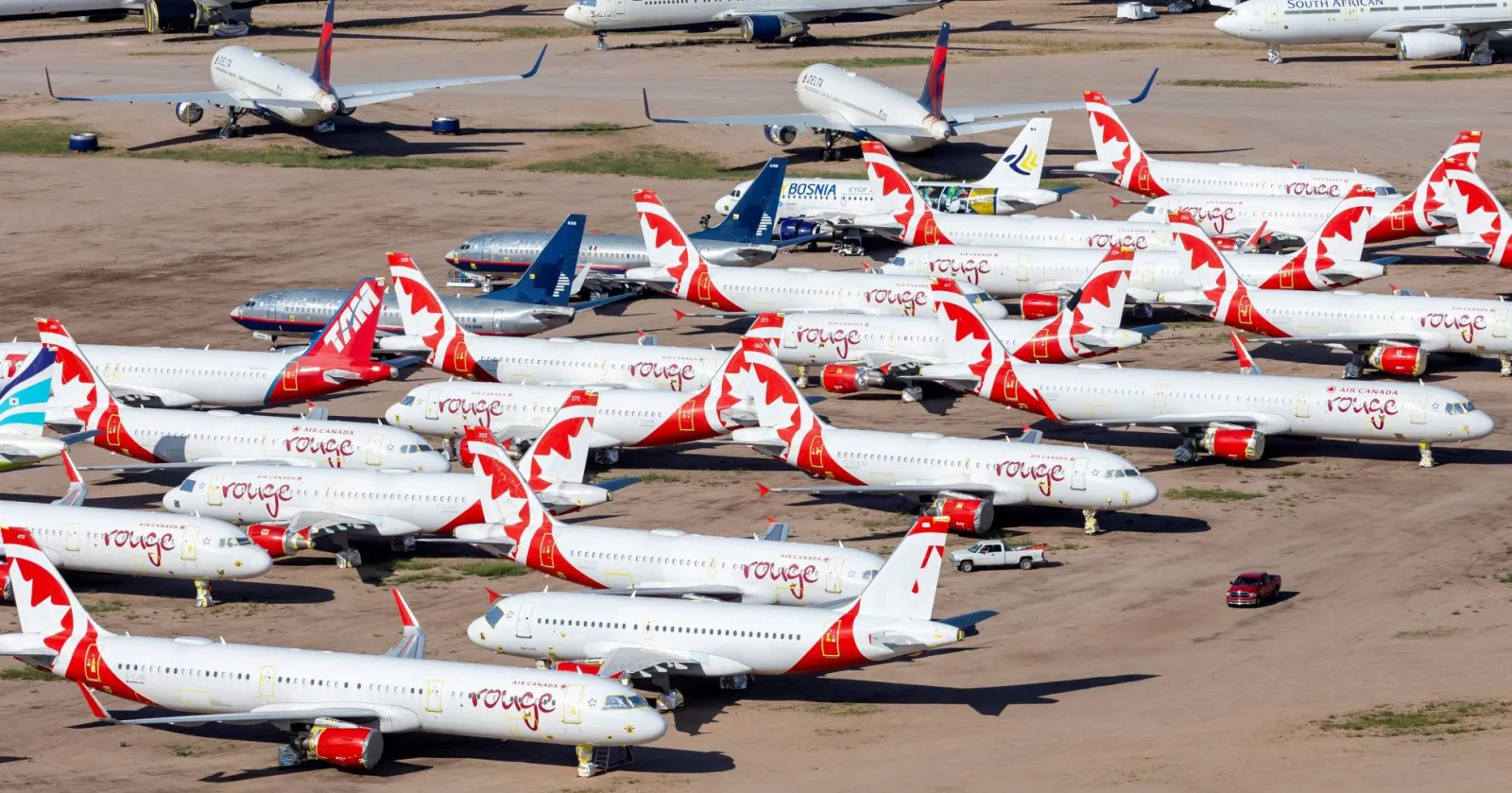
Pictures tell a sad tail of thousands of planes
Sep 14, 2020

The photographs reveal a haunting narrative of countless planes, each representing dreams deferred and journeys never undertaken. Abandoned in desolate fields and rusting in silence, these aircraft tell stories of lost adventures and faded hopes. Once symbols of freedom and exploration, they now stand as relics of a bygone era, gathering dust and memories. The stark contrast between their former glory and present decay evokes a profound sense of melancholy, reminding us of the impermanence of human ambition. Each image captures not just metal and machinery, but the echoes of lives intertwined with the promise of flight and the weight of unfulfilled aspirations.
In recent years, the aviation industry has faced significant challenges, leading to an overwhelming number of grounded aircraft. Pictures tell a sad tale of thousands of planes, capturing the stark reality of a once-bustling industry brought to a halt. In this article, we will explore the various aspects of this situation, using data and visuals to illustrate the impact on airlines, airports, and the economy.
The State of the Aviation Industry
The aviation industry has long been a pillar of global connectivity and economic growth. However, the onset of the COVID-19 pandemic led to unprecedented disruptions. With travel restrictions and safety concerns, airlines were forced to ground flights, resulting in a staggering number of planes parked at airports around the world. The following table provides a snapshot of the number of grounded aircraft by major airline regions:
| Region | Number of Grounded Aircraft |
|---|---|
| North America | 1,500+ |
| Europe | 2,000+ |
| Asia-Pacific | 1,800+ |
| Middle East | 800+ |
This table highlights the scale of the grounding across different regions, emphasizing how widespread the issue is. The images capturing these parked planes paint a poignant picture of the aviation industry's struggles, illustrating the once-busy airports now filled with idle aircraft.
The Economic Impact
The grounding of thousands of planes has not only affected airlines but has also had a ripple effect on the global economy. The aviation sector contributes significantly to job creation and GDP in many countries. With flights grounded, airlines faced immense financial losses, leading to furloughs, layoffs, and even bankruptcies. Key statistics related to the economic impact of the grounded aircraft include:
- Over 10 million jobs at risk globally due to the aviation downturn.
- Estimated loss of $371 billion in revenue for airlines in 2020.
- Significant declines in tourism-related income, affecting hotels, restaurants, and local businesses.
The bold keywords related to this crisis, such as "aviation downturn," "job losses," and "financial impacts," encapsulate the dire circumstances faced by the industry. These terms are vital for understanding the broader influence of grounded aircraft on the economy.
Environmental Considerations
Interestingly, while the grounding of planes has devastating economic implications, it has also presented an unexpected opportunity for the environment. With fewer flights in the air, there has been a notable decrease in carbon emissions. A recent report indicated that aviation emissions dropped by more than 50% in 2020 compared to previous years. This situation underscores the dual-edged nature of the crisis:
- Reduced noise pollution in urban areas.
- Clearing of airspace leading to improved air quality.
- Potential for a more sustainable aviation industry post-recovery.
These environmental benefits, while overshadowed by the economic fallout, introduce a new narrative in the discussion about aviation's future. The challenge will be to balance recovery with sustainability, ensuring that as planes take to the skies once more, they do so in a way that minimizes their environmental footprint.
The Future of Aviation
As the world begins to recover from the pandemic, the future of aviation remains uncertain. Airlines are adopting various strategies to rebound, including:
- Implementing health and safety protocols to reassure travelers.
- Investing in new aircraft technology to improve fuel efficiency.
- Exploring alternative business models, such as cargo flights, to diversify revenue streams.
These proactive measures aim to address the challenges posed by the grounding of thousands of planes. As the industry looks ahead, the resilience and adaptability of airlines will be critical in navigating the post-pandemic landscape.
Conclusion
The pictures depicting the sad tale of thousands of grounded planes serve as a powerful reminder of the aviation industry's fragility. The economic implications, environmental considerations, and future strategies outlined in this article illustrate the complex landscape faced by airlines today. As the world gradually reopens and travel resumes, the hope is that the aviation industry will emerge stronger, more sustainable, and more resilient than ever before.
Related Articles

Explore Thailand: The Best Islands to Visit for Paradise, Adventure, and Relaxation

The Ultimate Guide to the Best Islands in Thailand for Your Next Getaway

Do babies need passports? How to get a passport for a newborn

How to get a U.S. passport fast: here’s how to expedite the process

What is Mobile Passport Control: 5 reasons why you should use it

SENTRI vs. Global Entry: A detailed guide

Do you need a passport to go to the Bahamas? Let’s find out

Do you need a passport to go to Mexico? A detailed guide

Do you need a passport to go to Canada? We got the answer

Do You Need a Passport for a Cruise: An Essential Travel Guide

Booster Seat Requirements: All the Rules to Follow in Your Rental Car

What Are the World’s Most Powerful Passports, and How Does Yours Rank?

How to Take a Passport Photo at Home: A Helpful Guide

You've got to have heart! Southwest's new livery

Your opinion: Should water be free on low cost carriers?

Young women bolder than guys as solo travellers
